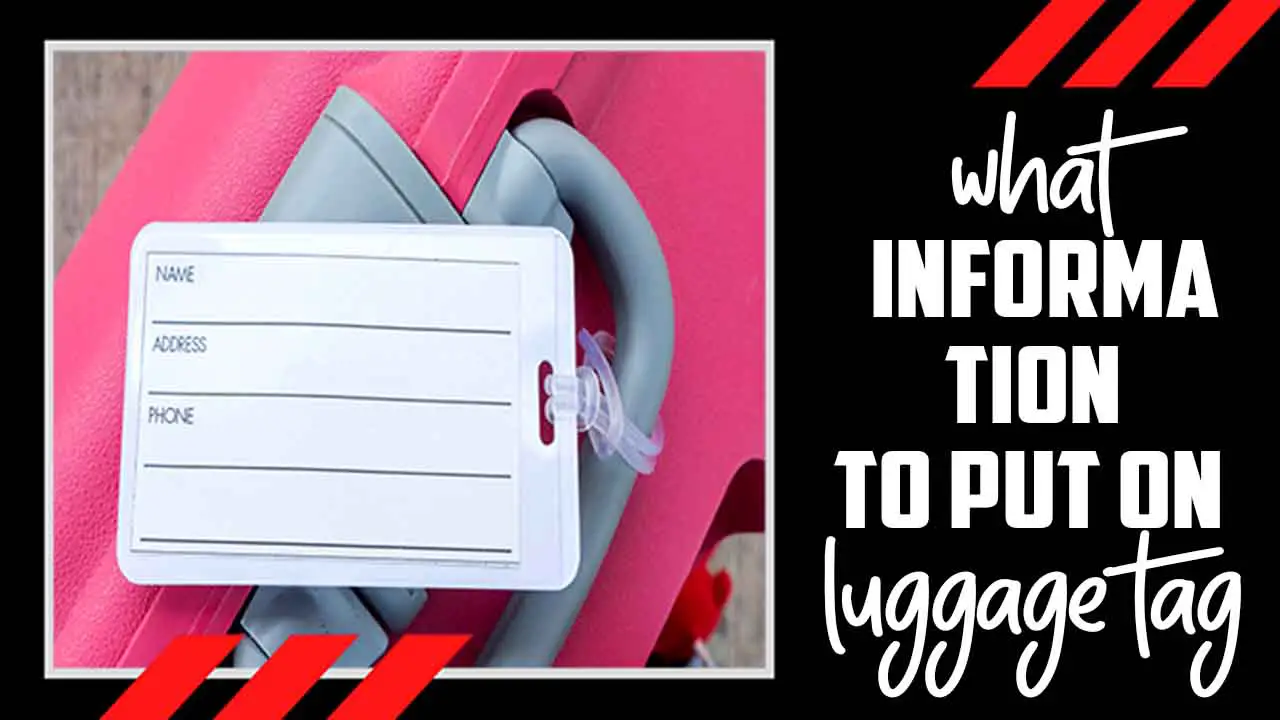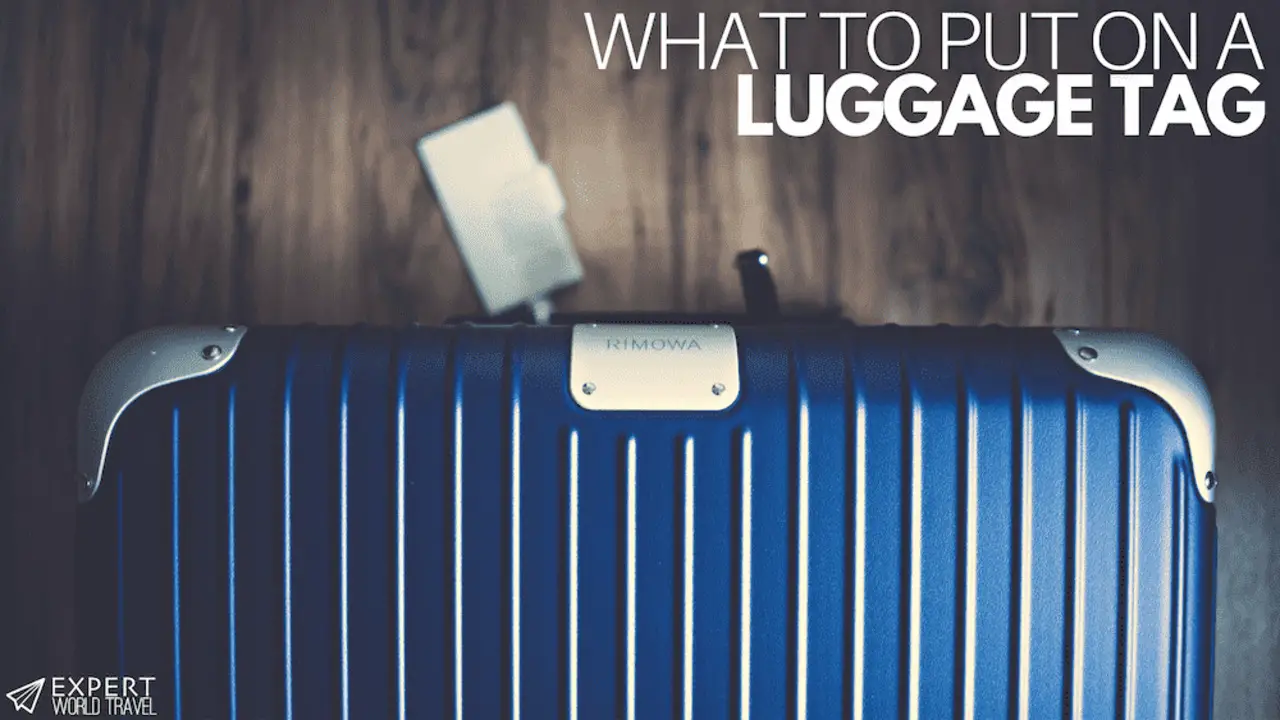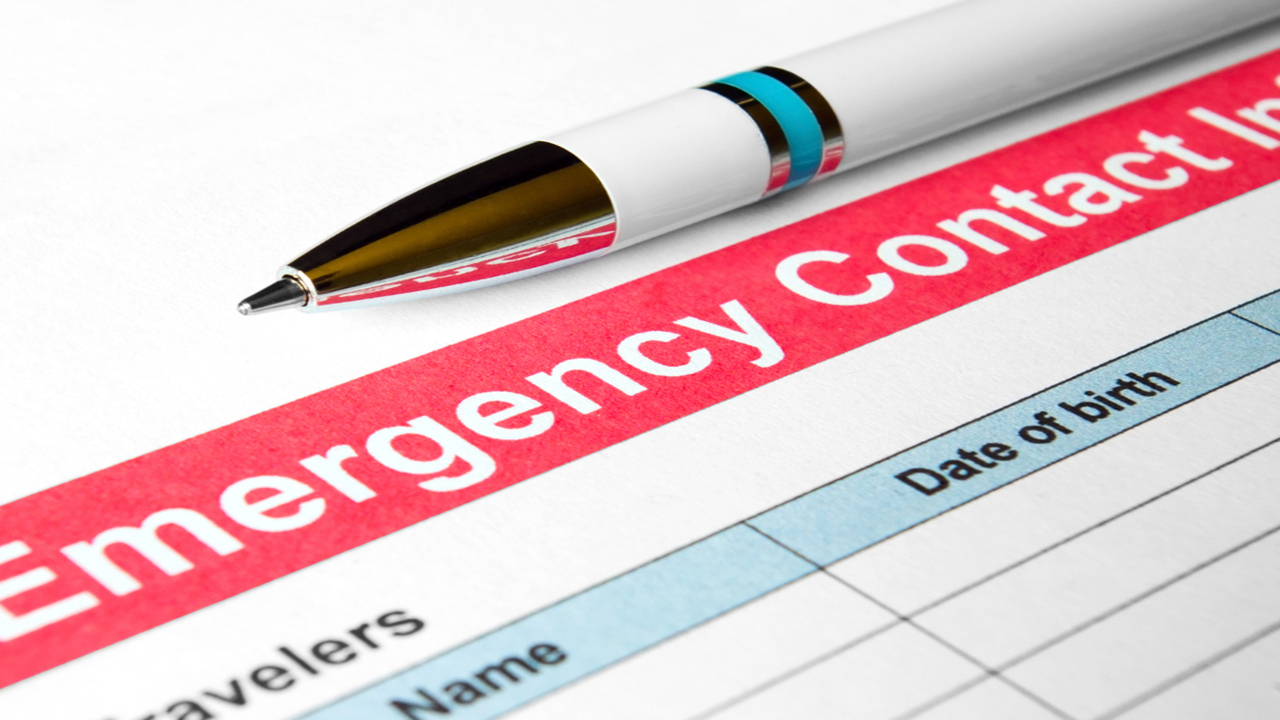As we prepare for our next trip, there are many things to consider and plan for. One important aspect that we often overlook is the luggage tag. It may seem like a small detail, but it can make a huge difference in ensuring that our luggage arrives safely at its intended destination.
While many of us may simply write our name and phone number on our luggage tag. Much more information can be included to make things easier for airline staff and ensure that our luggage is returned to us if lost.
We will discuss what information to put on a luggage tag, from the basic details such as your name. By providing comprehensive and accurate information on our luggage tags, we can help to ensure that our luggage arrives safely and on time. We will discuss what information to put on luggage tag.

What Information To Put On Luggage Tag: A Complete Guide”

Many travelers often overlook luggage tags when it comes to travel. However, it is important to understand why including certain information on your luggage tag is vital. Firstly, luggage tags serve as a means of identification for your bags.
Additionally, including your contact details, such as your name, phone number, and email address, on the luggage tag ensures that you can be contacted if your luggage needs to be returned. It also prevents someone else from claiming your luggage as theirs. Here are some outlines to help you What information to put on luggage tag
Personal Contact Information

It’s crucial to ensure that your personal contact information is easily accessible and visible, especially when you’re travelling. In case of any mishap, your contact details can play a significant role in reuniting you with lost or misplaced items, including your luggage.
That’s why putting your name, phone number, and address on your luggage tag is essential. Having your contact information on your luggage tag can help airport officials identify and return your bag without any hassle.
This is particularly important if you lose your phone or suffer a battery failure while travelling. Additionally, you can add a distinctive marker or symbol on your luggage to help you spot it quickly among many other similar bags.
1. Full Name
When planning a trip, it’s important to consider all the little details, including what information to put on your luggage tag. You should include your full name, phone number, and email address on your luggage tag as key information. Including your home address on the luggage tag is also a good idea.
This will help the airline or hotel locate you if your luggage is accidentally sent to the wrong destination. However, it’s important to be cautious when displaying personal information on your luggage tag. It’s best to avoid putting your full home address on the tag if possible, as this could make you a target for theft or other security risks.
2. Phone Number
When you travel, you should put a luggage tag on your bags to ensure you can quickly identify and return them if they are lost or misplaced. When filling out a luggage tag, you should include a few key pieces of information.
This will allow airport staff or anyone who finds your bag to contact you to let you know they have it quickly. Additionally, it is a good idea to include your email address and any other relevant contact information, such as social media handles. If someone cannot reach you by phone.
Other important information to include on your luggage tag includes your flight information. Including your flight number and destination city, as well as any special instructions for handling your bag
3 Email Address
When it comes to traveling, ensuring that you properly label your luggage is one of the most important things you can do. A luggage tag is a small but crucial information that can help you avoid losing your bags in transit.
One important information to include on your luggage tag is your email address. This is especially important if you’re travelling internationally, as it can be difficult to get in touch with someone if they don’t have a local phone number.
But what other information should you put on your luggage tag? First and foremost, you should include your name. This is especially important if you have multiple bags or are travelling with someone else
Travel Itinerary

For any traveller, having a well-organized travel itinerary can make all the difference in ensuring a smooth and stress-free trip. A travel itinerary is essentially a comprehensive plan that outlines your trip’s details, including transportation arrangements, accommodation bookings, activities and sightseeing plans, and any other important information you may need.
Without a travel itinerary, you risk missing out on important sights or experiences or encountering unexpected delays or cancellations that can throw off your entire trip. In addition to a travel itinerary, a luggage tag is another essential item for any traveller.
This small but important accessory can help ensure your luggage safely makes it to your destination. It can also help you easily identify your bags in a sea of similar-looking suitcases. When filling out a luggage tag, include your name and phone number.
1.Destination Address
One crucial aspect of luggage identification is ensuring your luggage tag includes the correct destination address. This address should include the full name of your hotel or destination, street address and zip code. You should include your contact information, such as your name, phone number, and email address, in case your luggage gets lost.
This will make it easier for airport staff and hotel employees to locate you and return your luggage. However, it’s important to avoid including too much information that could potentially risk your security. For instance, avoid including your home address or social security number on your luggage tag.
2.Departure Address
When traveling, you should properly label your luggage with the necessary information to avoid confusion or loss. One vital information to include on your luggage tag is your departure address. This address you will be departing from serves as a crucial identifier in case your luggage gets lost or misplaced. It is also advisable to include your full name, phone number, and email address on the tag.
The airlines or airport staff can contact you if they find your lost luggage. Ensure you securely attach the luggage tag to your bag and make the information legible and clear. You can use a permanent marker or a luggage tag with a plastic cover to protect the information from smudging or fading
3.Flight Information (If Applicable)
When traveling, it is important to have your luggage properly labelled with your flight information. This includes your name, address, and phone number, as well as the airline, flight number, and destination.
It is also important to double-check that the information on your luggage tag matches your flight itinerary to avoid confusion. Additionally, adding a unique identifier to your luggage can be beneficial. Such as a brightly coloured ribbon or sticker to make it easier to spot among a sea of similar bags.
Emergency Contact Information

Emergency contact information is crucial in any emergency situation. Whether it’s a natural disaster, a medical emergency, or a personal crisis. Having accurate and up-to-date contact information can make all the difference. Emergency services need to be able to identify who to contact quickly in case of an emergency. And having the right information can save valuable time and potentially even lives.
Having emergency contact information readily available is especially important for vulnerable populations such as children, the elderly, and those with chronic medical conditions. In an emergency, these individuals may be unable to communicate their needs or contact their loved ones. Making it all the more important for their emergency contacts to be readily available. It’s also important to regularly update emergency contact information as circumstances change
1.Full Name
When preparing for a trip, it’s important to consider what information to put on your luggage tag. Your full name is one of the most important pieces of information on the tag. Airline staff and baggage handlers can easily identify your luggage and ensure it is routed to the correct destination.
We recommend that you use your full legal name, as this is the name that is likely to be on your ticket and other travel documents. Including your contact information, such as a phone number or email address, is also important. However, it’s important to be cautious about including too much personal information on your luggage tag, such as your home address. Thieves or other criminals could potentially use this information.
2.Phone Number
Access to emergency contact information is crucial during times of crisis or unexpected events. One of the most important information readily available is a phone number for emergency contacts. Whether travelling, participating in a high-risk activity, or just going about your daily routine, having access to emergency contact information can make all the difference in the world.
In today’s age, there are many ways to store and access this information. You can keep a list of contacts in your phone, create an emergency contact card in your wallet, or even use wearable technology to store this information. Additionally, it’s important to regularly update this information, especially if you move or change phone numbers.
3.Relationship To The Traveler

When embarking on a journey, it is important to have a trusted emergency contact who has a close relationship with the traveller. This may be a family member. Close friend or significant other who is readily available and can take on the responsibility of being an emergency contact. In addition to having a reliable emergency contact, providing them with accurate and up-to-date information is crucial.
This includes the traveller’s itinerary, contact information, and any relevant medical information useful in an emergency. It is also important to establish clear communication with the emergency contact. So they know how to reach the traveller and what steps should be taken in an emergency.
Conclusion
Maximizing security during travel starts with the simple yet crucial step of filling out a comprehensive luggage tag. By including essential information on the tag, such as personal contact details, travel itinerary, emergency contacts, and additional identification, travellers significantly increase the chances of their belongings being safely reunited with them in case of any mishaps.
Including special instructions or allergies on the luggage tag also ensures that airline staff handle the luggage with care and are aware of any specific needs, further enhancing the security of the belongings and the traveller’s well-being.
A correctly filled-out luggage tag is a fundamental tool for maximizing security, peace of mind, and a smooth travel experience, underscoring its importance as an essential travel accessory for every journey. If you read the above outline properly, we hope you understand what information to put on luggage tag.
FAQ
1.Why Is It Important To Include Personal Contact Information On A Luggage Tag To Maximize Security?
Ans: Including personal contact information such as a phone number and email address helps airlines or authorities promptly contact you if your luggage is misplaced or lost, maximizing the chances of a safe return.
2.How Does Adding Travel Itinerary Details On A Luggage Tag Enhance Security During Travel?
Ans: Including your destination and departure addresses, along with flight information if applicable, assists in reuniting you with your luggage in case of separation, ensuring it reaches the correct destination.
3.What Role Does Emergency Contact Information Play In Enhancing Luggage Security?
Ans: Emergency contact information is crucial for situations like lost luggage or emergencies during travel. It allows airlines or authorities to contact your designated contact if needed.
4.How Does Adding Additional Identification Details On A Luggage Tag Improve Security For International Travel?
Ans: Including details like your passport number and driver’s license helps you establish ownership if the luggage tag is damaged or lost, facilitating the identification process and enhancing security.
5.Why Should You Mention Special Instructions Or Allergies On A Luggage Tag For Security Purposes?
Ans: Mentioning special instructions or allergies on the luggage tag ensures that airline staff handle your luggage carefully and are aware of any medical needs, maximizing the safety of your belongings and well-being.


